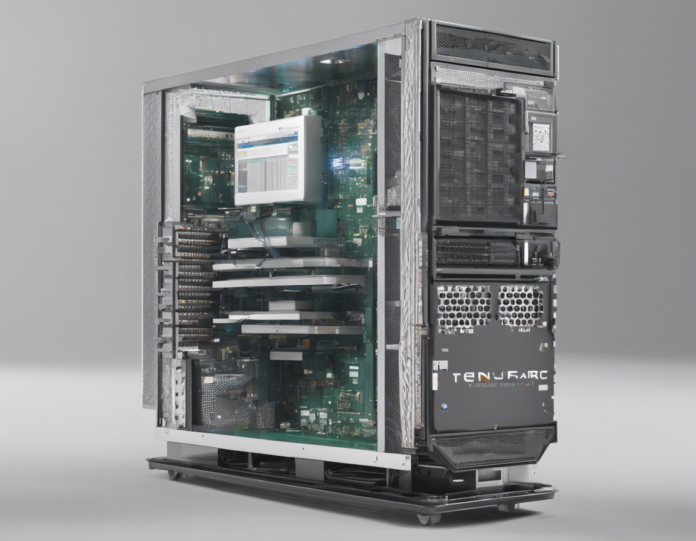In the world of computer vision and image processing, the term "GAN" has become synonymous with cutting-edge technology that has revolutionized the way images are generated and replicated. One of the most recent breakthroughs in this field is the "GFPGAN" or "Guided Feature Pyramid GAN". This innovative neural network architecture has pushed the boundaries of image replication to new heights, producing stunningly realistic images that are virtually indistinguishable from photographs taken with a camera. In this article, we will delve deep into the intricacies of GFPGAN, exploring its architecture, applications, and the impact it is having on various industries.
Understanding GANs and GFPGAN
Before we can dive into the world of GFPGAN, it is crucial to have a basic understanding of GANs. "GAN", which stands for Generative Adversarial Network, is a type of artificial intelligence algorithm that is used to generate new data instances. GANs consist of two neural networks – the generator and the discriminator – that work in tandem to produce high-quality, realistic outputs.
GFPGAN, an advanced variant of the traditional GAN, incorporates the concept of the Feature Pyramid Network (FPN) into its architecture. FPN is a widely-used framework in object detection tasks that leverages features at multiple scales to improve performance. By integrating FPN into the GAN framework, GFPGAN is able to generate images with better resolution and finer details, making it a powerful tool for image replication tasks.
The Architecture of GFPGAN
GFPGAN combines the strengths of the traditional GAN architecture with the multi-scale feature extraction capabilities of FPN to achieve superior image replication results. The network is designed to extract features at different levels of abstraction, allowing it to capture both low-level details and high-level semantics of an image.
At the core of the GFPGAN architecture are the generator and discriminator networks. The generator takes random noise as input and generates an image, while the discriminator evaluates the generated image to distinguish between real and fake samples. By training the generator and discriminator simultaneously, GFPGAN is able to learn to produce highly realistic images that closely resemble the training data.
One of the key innovations of GFPGAN is the use of skip connections between the generator and discriminator networks. These connections allow high-level semantic information to flow directly from the generator to the discriminator, enabling the network to better capture the overall structure of the image.
Applications of GFPGAN
The impressive capabilities of GFPGAN have opened up a wide range of applications across different industries. Some of the notable applications of GFPGAN include:
1. Image Inpainting:
GFPGAN can be used to fill in missing parts of an image with visually coherent content. This is particularly useful in restoring damaged or corrupted images.
2. Super-Resolution:
GFPGAN excels at upscaling images while preserving sharp details and textures. This is valuable in enhancing the visual quality of low-resolution images.
3. Style Transfer:
By leveraging the feature extraction capabilities of FPN, GFPGAN can transfer the style of one image onto another, creating artistic and visually appealing results.
4. Face Editing:
GFPGAN can be used for facial attribute editing, such as changing hair color, adding makeup, or altering facial expressions, with remarkable realism.
The Impact of GFPGAN
The introduction of GFPGAN has marked a significant milestone in the field of image replication and generation. Its ability to produce high-fidelity images with fine details and realistic textures has paved the way for advancements in various domains, including:
-
Digital Art and Entertainment: Artists and designers can leverage GFPGAN to create photorealistic graphics, animations, and visual effects for movies, games, and virtual environments.
-
Fashion and Design: GFPGAN can facilitate virtual try-on experiences, where customers can see themselves wearing different outfits or accessories without physically trying them on.
-
Medical Imaging: GFPGAN has the potential to assist healthcare professionals in generating high-quality medical images for diagnostics, surgical planning, and research purposes.
-
Forensics and Law Enforcement: Law enforcement agencies can use GFPGAN to enhance surveillance footage, generate facial composites, or reconstruct crime scenes with greater accuracy.
FAQs
Q1: What sets GFPGAN apart from traditional GANs?
A1: GFPGAN incorporates the Feature Pyramid Network (FPN) into its architecture, enabling it to capture multi-scale features and produce high-resolution images with finer details.
Q2: Can GFPGAN be used for video processing?
A2: While GFPGAN is primarily designed for image replication, its principles can be extended to video processing tasks such as frame interpolation and video super-resolution.
Q3: How long does it take to train a GFPGAN model?
A3: Training a GFPGAN model can be computationally intensive and time-consuming, depending on the complexity of the dataset and the desired output quality.
Q4: Is GFPGAN suitable for real-time applications?
A4: Real-time applications may require optimizing the GFPGAN architecture for efficiency and speed to meet the low-latency requirements of interactive systems.
Q5: What are some potential ethical concerns related to the use of GFPGAN?
A5: The use of GFPGAN raises ethical considerations related to image manipulation, identity theft, misinformation, and the creation of fake visual content.
In conclusion, GFPGAN represents a groundbreaking advancement in the field of image replication, pushing the boundaries of what is possible with generative neural networks. Its ability to generate highly realistic images with exceptional detail and fidelity has profound implications across industries, paving the way for new creative possibilities and applications. As researchers and developers continue to refine and expand upon the capabilities of GFPGAN, we can expect to see even more impressive feats of artificial intelligence in the realm of visual content generation.


Recent comments